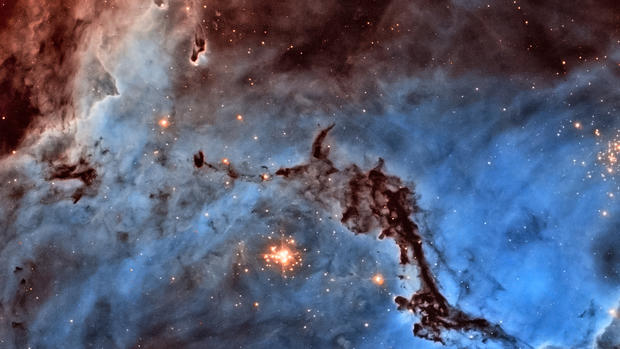Stellar find: "Supermassive" black hole in tiny galaxy
A team of astronomers has made a rare find in a dwarf galaxy some 50 million light years away. NASA says they discovered that the tiny galaxy M60-UCD1 contains a supermassive black hole.
While big black holes are found in all major galaxies -- including our own Milky Way -- the discovery is significant because M60-UCD1 is the densest galaxy ever found to contain such a massive hole. Black holes have a gravitational pull so strong that not even light can escape.
A black hole is considered supermassive if it has the mass of at least one million stars like our sun; the one discovered in M60-UCD1 has the mass of 21 million suns. That's five times the mass of the black hole at the center of the Milky Way, even though our galaxy is 500 times larger, according to NASA.
University of Utah astronomer Anil Seth led the research, using data from NASA's Hubble Space Telescope along with the Gemini North 8-meter optical and infrared telescope on Hawaii's Mauna Kea to capture the dwarf galaxy and the black hole's mass.
The astronomers used adaptive optics technology to study the galaxy and its massive black hole.
"Normally, our images from telescopes on the ground are blurred out by the 'twinkling' of the stars, caused by the refraction of light in the atmosphere," Seth told CBS News. "With adaptive optics, you use a flexible mirror to undo the affects of the atmosphere and get a sharper image."
Since there were no bright stars next to M60-UCD1, the team used a laser to create their own "fake" stars in the upper atmosphere to use for the adaptive optics process.
"This allowed us to study the motions of the stars at many points within the very small object," Seth said. "By observing the motions of the stars at the center of the ultra-compact dwarf compared to in its outskirts, we were able to separately weigh the stars in the galaxy and the black hole."
Because the small galaxy is so compact and dense, the view from inside it would be spectacular, scientists say. Any inhabitants -- should they exist -- would see at least 1 million stars in the night sky, compared to about 4,000 stars visible from Earth.
The research, published Thursday in the journal Nature, also suggests that M60-UCD1 is a stripped remnant of a much larger galaxy.
"One explanation is that M60-UCD1 was once a large galaxy containing 10 billion stars, but then it passed very close to the center of an even larger galaxy, M60, and in that process all the stars and dark matter in the outer part of the galaxy were torn away and became part of M60," according to NASA.
Eventually, the researchers believe that M60-UCD1 will likely merge with M60. M60 has its own substantial black hole, more than 1,000 times bigger than the one in our galaxy.
